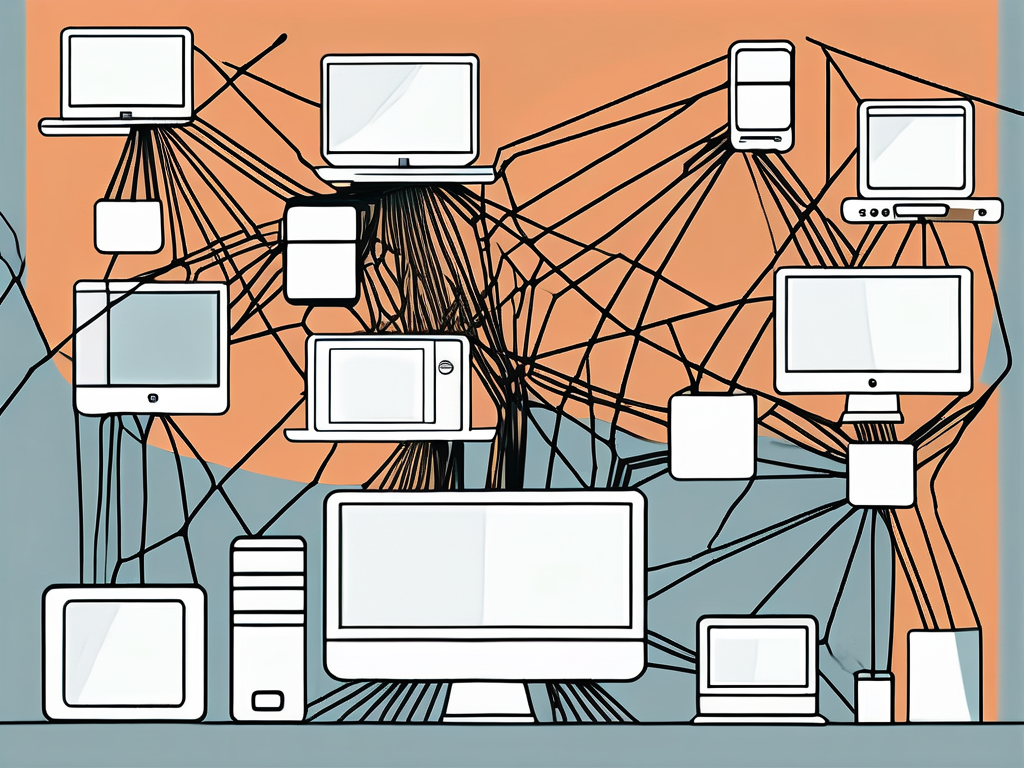The Evolution and Impact of Connected Advertising

HOW TO MAKE AN AMERICAN COFFEE?
Lorem ipsum dolor sit amet, consectetur adipiscing elit lobortis arcu enim urna adipiscing praesent velit viverra sit semper lorem eu cursus vel hendrerit elementum morbi curabitur etiam nibh justo, lorem aliquet donec sed sit mi dignissim at ante.
- Neque sodales ut etiam sit amet nisl purus non tellus orci ac auctor
- Adipiscing elit ut aliquam purus sit amet viverra suspendisse potent
- Mauris commodo quis imperdiet massa tincidunt nunc pulvinar
- Excepteur sint occaecat cupidatat non proident sunt in culpa qui officia
ADDING WATER TO COFFEE
Vitae congue eu consequat ac felis placerat vestibulum lectus mauris ultrices cursus sit amet dictum sit amet justo donec enim diam porttitor lacus luctus accumsan tortor posuere praesent tristique magna sit amet purus gravida quis blandit turpis.

POURING COFFEE INTO THE WATER
At risus viverra adipiscing at in tellus integer feugiat nisl pretium fusce id velit ut tortor sagittis orci a scelerisque purus semper eget at lectus urna duis convallis. porta nibh venenatis cras sed felis eget neque laoreet suspendisse interdum consectetur libero id faucibus nisl donec pretium vulputate sapien nec sagittis aliquam nunc lobortis mattis aliquam faucibus purus in.
- Neque sodales ut etiam sit amet nisl purus non tellus orci ac auctor
- Adipiscing elit ut aliquam purus sit amet viverra suspendisse potenti
- Mauris commodo quis imperdiet massa tincidunt nunc pulvinar
- Adipiscing elit ut aliquam purus sit amet viverra suspendisse potenti
HANDLING THE INFUSION
Nisi quis eleifend quam adipiscing vitae aliquet bibendum enim facilisis gravida neque. Velit euismod in pellentesque massa placerat volutpat lacus laoreet non curabitur gravida odio aenean sed adipiscing diam donec adipiscing tristique risus. amet est placerat in egestas erat imperdiet sed euismod nisi.
“NISI QUIS ELEIFEND QUAM ADIPISCING VITAE ALIQUET BIBENDUM ENIM FACILISIS GRAVIDA NEQUE VELIT EUISMOD”
CONCLUSION
Eget lorem dolor sed viverra ipsum nunc aliquet bibendum felis donec et odio pellentesque diam volutpat commodo sed egestas aliquam sem fringilla ut morbi tincidunt augue interdum velit euismod eu tincidunt tortor aliquam nulla facilisi aenean sed adipiscing diam donec adipiscing ut lectus arcu bibendum at varius vel pharetra nibh venenatis cras sed felis eget.
The Evolution and Impact of Connected Advertising
In the digital age, the concept of advertising has undergone a significant transformation, moving beyond traditional mediums to embrace the interconnected world of online and digital platforms. This shift has given rise to what is now known as 'connected advertising', a strategy that leverages the power of the internet, mobile devices, and smart technology to create a more engaging, personalized, and efficient way to reach consumers. In this article, we delve into the intricacies of connected advertising, exploring its evolution, key components, and the profound impact it has on the marketing landscape.
Understanding Connected Advertising
At its core, connected advertising represents the convergence of various digital advertising channels into a cohesive, interconnected strategy. It's about creating a seamless experience for the consumer, where messages are not only consistent across different platforms but also tailored to the individual's preferences and behaviors.
The Role of Data in Connected Advertising
Data is the lifeblood of connected advertising. It fuels the algorithms that analyze consumer behavior, preferences, and engagement patterns. Through the collection and analysis of data, advertisers can craft personalized messages that resonate with the target audience, thereby increasing the effectiveness of their campaigns.
Moreover, data analytics enable marketers to measure the performance of their campaigns in real-time, allowing for adjustments and optimizations to be made on the fly. This data-driven approach ensures that resources are allocated efficiently, maximizing return on investment (ROI).
Technologies Powering Connected Advertising
The advancement of technology has been a critical driver in the evolution of connected advertising. From programmatic advertising platforms that automate the buying and selling of ad space to artificial intelligence (AI) and machine learning algorithms that predict consumer behavior, technology has revolutionized the way advertisers connect with their audience.
Additionally, the proliferation of smart devices and the Internet of Things (IoT) has opened new avenues for advertisers to engage with consumers. Smart TVs, wearables, and home assistants, for example, offer unique opportunities for personalized and contextually relevant advertising.
Benefits of Connected Advertising
Connected advertising offers a myriad of benefits for both advertisers and consumers. For businesses, it provides a more efficient and effective way to reach their target audience, while consumers enjoy more relevant and personalized advertising experiences.
Enhanced Targeting and Personalization
One of the key advantages of connected advertising is its ability to target consumers with unprecedented precision. By leveraging data and technology, advertisers can identify specific segments of their audience and tailor their messaging to meet the unique needs and interests of each group.
This level of personalization not only increases the likelihood of engagement but also fosters a deeper connection between the brand and the consumer, enhancing brand loyalty and advocacy.
Improved Measurement and Analytics
Connected advertising also offers superior measurement and analytics capabilities. With access to real-time data, advertisers can track the performance of their campaigns across multiple channels, gaining insights into what works and what doesn't. This enables them to make data-driven decisions, optimize their strategies, and achieve better outcomes.
Furthermore, the ability to measure the customer journey from initial exposure to conversion provides valuable insights into consumer behavior, helping advertisers refine their targeting and messaging for future campaigns.
Challenges and Considerations
While connected advertising presents significant opportunities, it also comes with its own set of challenges. Privacy concerns, data security, and the need for integration across platforms are just a few of the considerations that advertisers must navigate.

Navigating Privacy and Data Security
In an era where data breaches and privacy violations are increasingly common, maintaining consumer trust is paramount. Advertisers must ensure that they are transparent about their data collection practices and comply with all relevant privacy regulations, such as the General Data Protection Regulation (GDPR) in Europe.
Additionally, securing consumer data against unauthorized access and breaches is critical. Failure to protect consumer information can lead to significant reputational damage and financial losses.
Integration Across Platforms
Creating a seamless advertising experience across multiple platforms requires a high degree of integration and coordination. Advertisers must ensure that their messaging is consistent and that campaigns are synchronized across all channels. This can be a complex undertaking, particularly for businesses that operate on a global scale.
Investing in the right technology and partnering with experienced vendors can help overcome these challenges, enabling advertisers to execute connected advertising campaigns effectively.
The Future of Connected Advertising
Looking ahead, the future of connected advertising is poised to be even more dynamic and innovative. As technology continues to advance at a rapid pace, advertisers will have access to new tools and capabilities that further enhance their ability to engage with consumers.

Augmented reality (AR) and virtual reality (VR) are emerging as powerful mediums for immersive advertising experiences, allowing brands to create interactive and engaging campaigns that captivate audiences in new ways.
Furthermore, the rise of voice-activated devices and voice search presents a unique opportunity for advertisers to connect with consumers through audio-based advertising, opening up a whole new frontier in connected advertising strategies.
Augmented Reality and Virtual Reality
Augmented reality and virtual reality technologies are revolutionizing the way advertisers engage with consumers. AR overlays digital content onto the real world, providing interactive experiences that blend the physical and digital realms seamlessly.
VR, on the other hand, immerses users in a completely virtual environment, offering unparalleled opportunities for storytelling and brand engagement. By leveraging AR and VR technologies, advertisers can create memorable and impactful advertising campaigns that resonate with audiences on a deeper level.
Voice-Activated Advertising
The increasing prevalence of voice-activated devices, such as smart speakers and virtual assistants, has opened up a new frontier in advertising. Voice search is becoming increasingly popular, with users turning to voice commands to search for information, make purchases, and interact with brands.
Advertisers can leverage this trend by creating voice-activated advertising campaigns that engage consumers in a conversational manner. By tailoring their messaging to suit the nuances of voice search queries, advertisers can deliver more relevant and personalized experiences to their target audience.
Conclusion
Connected advertising represents the future of marketing, offering a more personalized, efficient, and engaging way to reach consumers. By leveraging data, technology, and innovative advertising strategies, businesses can create meaningful connections with their audience, driving brand loyalty and growth. However, success in this new landscape requires a careful balance between leveraging the opportunities presented by connected advertising and navigating the associated challenges, particularly in the realms of privacy and data security.

As the digital landscape continues to evolve, so too will the strategies and technologies underpinning connected advertising. Advertisers who stay ahead of the curve, embracing innovation while maintaining a steadfast commitment to consumer privacy, will be well-positioned to thrive in this dynamic and interconnected world.
Embrace the future of marketing with BarBoards.tv and transform your advertising approach. As you've seen, connected advertising is about innovation and engagement, and that's exactly what we offer. Turn your TVs into dynamic billboards and captivate the sports bar audience with tailored content that revolutionizes game-days. With BarBoards.tv, venue owners can effortlessly monetize their TVs, and advertisers can tap into a captive audience with custom promos, generating ad revenue while supporting local experiences. Discover the power of AI-driven advertising and intelligent management of your bar's TVs with no cost and no effort. Ready to add a revenue stream to your venue or engage customers across 150+ bars in Texas? Advertise at 150+ Bars Today!




